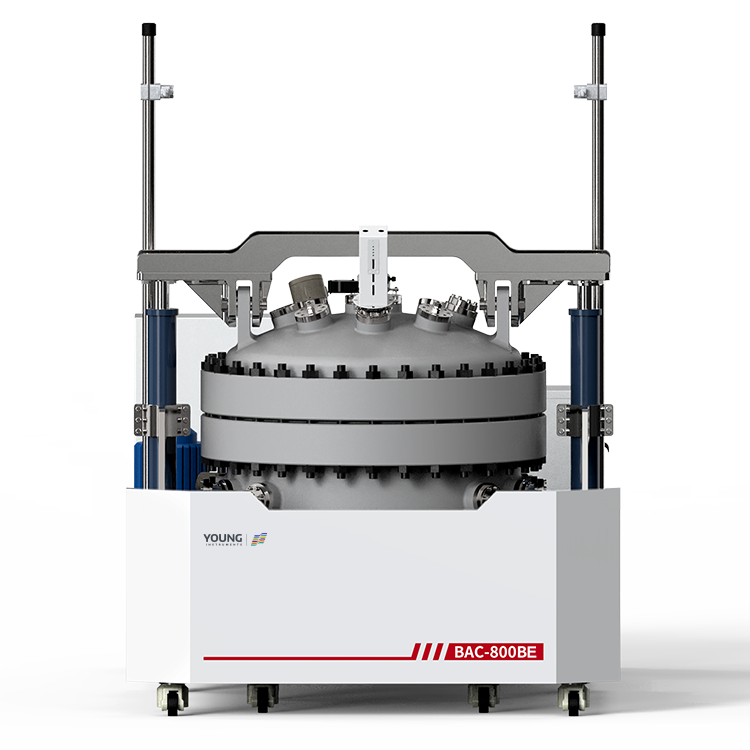Essential Insights into Thermal Hazards Testing: Instruments and Necessity
Chemical accidents, often resulting from uncontrolled reactions, pose significant risks. Between 1980 and 2002, the U.S. Chemical Safety and Hazard Investigation Board (CSB) investigated 167 hazardous reaction accidents, finding that 35% were due to uncontrolled reaction heat. This highlights the critical need for thermal hazards testing. By assessing safety risks, determining risk levels, and implementing proper safety designs, chemical enterprises can significantly enhance their safety protocols. The Accelerating Rate Calorimeter (ARC) is a pivotal instrument in this process, accurately simulating exothermic reactions under extreme conditions. It measures initial decomposition temperatures and tracks temperature and pressure changes, providing insights that other instruments like DTA and DSC cannot. Using ARC and similar tools is vital for understanding thermal properties, ensuring thermal stability, and preventing potentially catastrophic accidents.
Instruments for Thermal Hazards Testing
Key Features of ARC
The ARC stands out due to its ability to simulate potential secondary reaction risks under adiabatic conditions. It can precisely measure:
- Initial temperature of thermal decomposition
- Time-dependent changes in temperature and pressure during adiabatic decomposition
- Importantly, the ARC can detect slow pressure changes in the early stages of thermal decomposition, which other instruments like Differential Thermal Analysis (DTA) and Differential Scanning Calorimetry (DSC) cannot reveal.
Main Components
The ARC comprises several critical components:
- Heating Furnace: Ensures controlled heating of the sample.
- Temperature Control System: Maintains precise temperature regulation.
- Measurement System: Tracks changes in temperature and pressure over time.
- Sample Cell: Holds the sample during testing.
During the testing process, the sample is placed in the sample cell. Electric heating blocks, distributed evenly around the external chamber, compensate for heat loss due to temperature differences between the sample and its surroundings. This setup maintains a uniform temperature balance within the adiabatic furnace, ensuring an ideal testing environment.
Classic Operating Mode: “Heat-Wait-Search” (H-W-S)
The ARC operates in the “Heat-Wait-Search” (H-W-S) mode, a systematic approach that includes:
- Heating: Raising the temperature of the sample.
- Waiting: Allowing the system to reach equilibrium.
- Searching: Monitoring for any exothermic reactions.
Before starting, users can set various parameters, such as initial temperature, termination temperature, slope sensitivity, heating amplitude, and waiting time.
Applications
The ARC is versatile and can be used to study:
- Thermal Properties: Including thermal decomposition and phase changes.
- Material Evaluation: Assessing thermal stability, safety, and reliability of materials.
By using the ARC, researchers and engineers can gain detailed insights into the thermal behaviors of chemical substances, helping to design safer processes and prevent accidents in chemical industries.

Instrument Introduction——TAC-500AE Overview
Professional Data Analysis Software
The TAC-500AE comes equipped with professional data analysis software capable of automatically calculating essential parameters such as heat release onset temperature, adiabatic temperature rise, activation energy, and pre-exponential factor. The software integrates guidelines from emergency management departments for safety risk assessment of fine chemical reactions, offering a comprehensive assessment of the hazard degree of reaction processes. This functionality ensures that researchers can conduct thorough and accurate safety analyses with ease.
Advanced Safety Features
Safety is a top priority in the design of the TAC-500AE. The instrument can connect to an inert gas for rapid cooling of the furnace after an experiment, reducing the risk of accidents. It also features experimental status indicators and alarms for overpressure and overtemperature, enhancing safety during operations. The automatic lifting function of the furnace lid further adds to the safety and ease of use, ensuring that users can operate the instrument with confidence.
User-Friendly Design
The TAC-500AE boasts a professional industrial design with a simple and generous appearance. Its user-friendly human-machine interaction makes it easy to learn, understand, and operate. The intuitive interface and thoughtful design ensure that both novice and experienced users can quickly become proficient in using the instrument, maximizing its utility in various research and industrial settings.
Thermodynamic Calculation Methods
The data analysis software of the TAC-500AE includes differential conversion rate thermodynamic calculation methods. These methods provide significant advantages in the calculation of thermokinetics for the thermal decomposition of mixtures and the prediction of thermal hazards. By leveraging these advanced calculation techniques, researchers can gain deeper insights into the thermal behaviors of their samples, leading to more accurate predictions and better safety outcomes.
Specifications
The TAC-500AE operates in environments ranging from 5°C to 40°C with less than 85% relative humidity. Its temperature range spans from room temperature to 500°C, with a detection threshold of 0.005°C/min to 0.02°C/min and a tracking rate of 0.005°C/min to 40°C/min. The temperature resolution is 0.001°C. It can detect pressures from 0 to 20000 kPa with a resolution of 1 kPa. The sample test amount is 8 mL, and the test cell can be made from stainless steel, titanium alloy, or Hastelloy. The phi value is less than 1.35. It interfaces via USB or RJ45, operates on AC220V/50Hz power, and consumes less than 3000W. The instrument measures 620 mm x 470 mm x 670 mm and weighs approximately 78 kg.
CONCLUSION
Thermal hazards testing is critical for ensuring the safety and efficiency of chemical processes. The investigation of 167 hazardous reaction accidents by the U.S. They provide precise data on thermal decomposition, temperature, and pressure changes, allowing for comprehensive risk assessments and safety designs. Equipped with advanced features and user-friendly interfaces, Accelerating Rate Calorimeter enhances our understanding of chemical behaviors and improve safety measures in various industries. Adopting rigorous thermal hazards testing protocols is essential for mitigating risks and promoting safe chemical manufacturing and handling.





































